DIY landscaping ideas: 10 show-stopping projects to update your plot
Our round-up of DIY landscaping ideas are easy, budget-friendly, and stylish – from paths to pretty patios and more

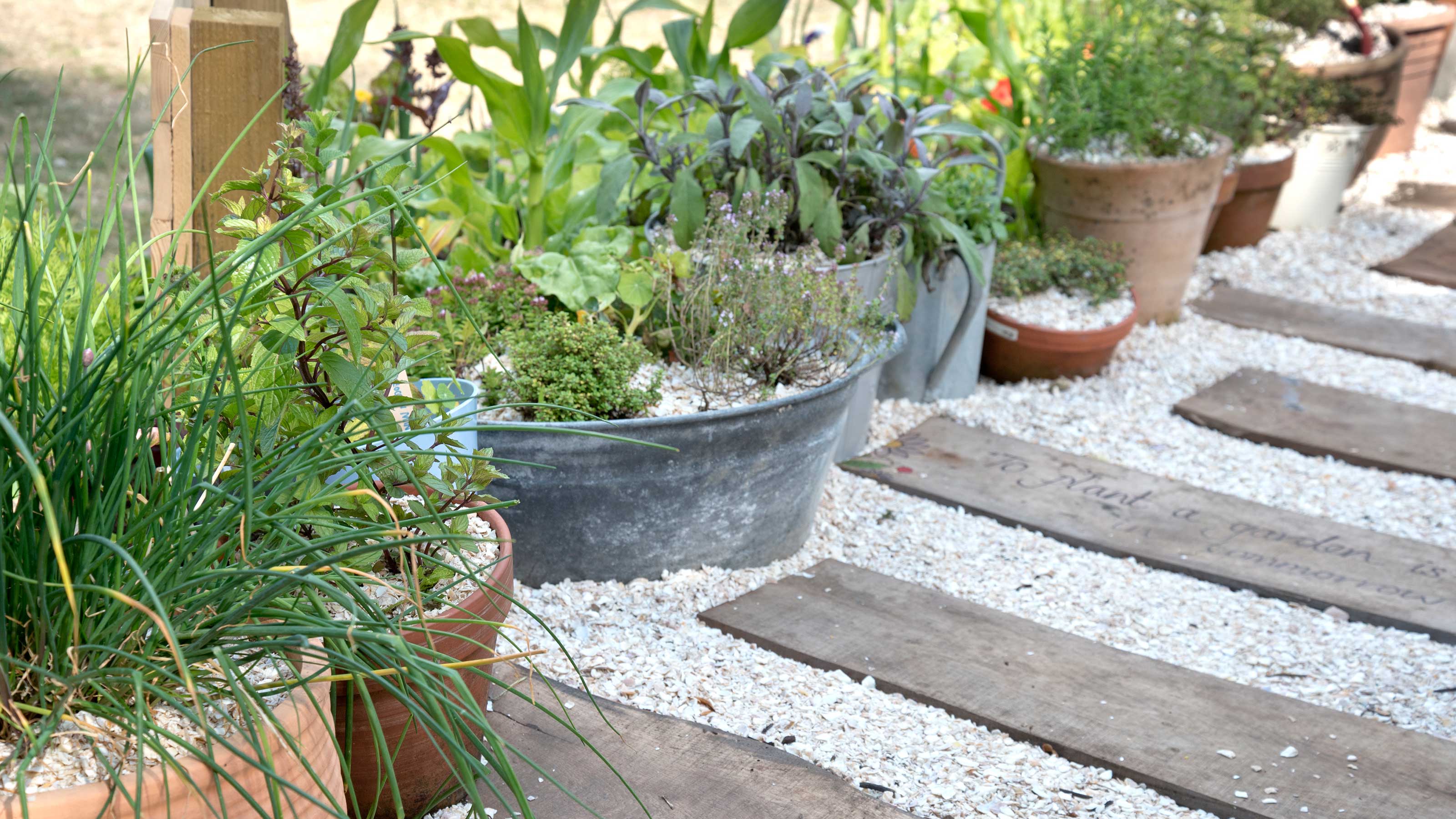
These DIY landscaping ideas are proof that you don't always need a pro when it comes to garden design. Perhaps you fancy a new walkway or storage solution for your outdoor space, or a stylish seating area for relaxing and entertaining guests. Well, building it yourself may be easier than you think, not to mention cheaper.
From DIY patio zones to features that will instantly boost the ambiance or practicality of your yard, there are all sorts you can add to your existing landscaping scheme. And many are easy to build, even for a total novice. What's more, you can often cut down on costs even further by using reclaimed materials – so why not give one (or two) of these DIY landscaping ideas a go?
Get inspired by these dazzling DIY landscaping ideas
Perusing these landscaping ideas is sure to get you inspired for your own backyard space – you'll be rolling up your sleeves and reaching for the toolkit in no time.
1. Build a bug hotel that doubles up as a bench
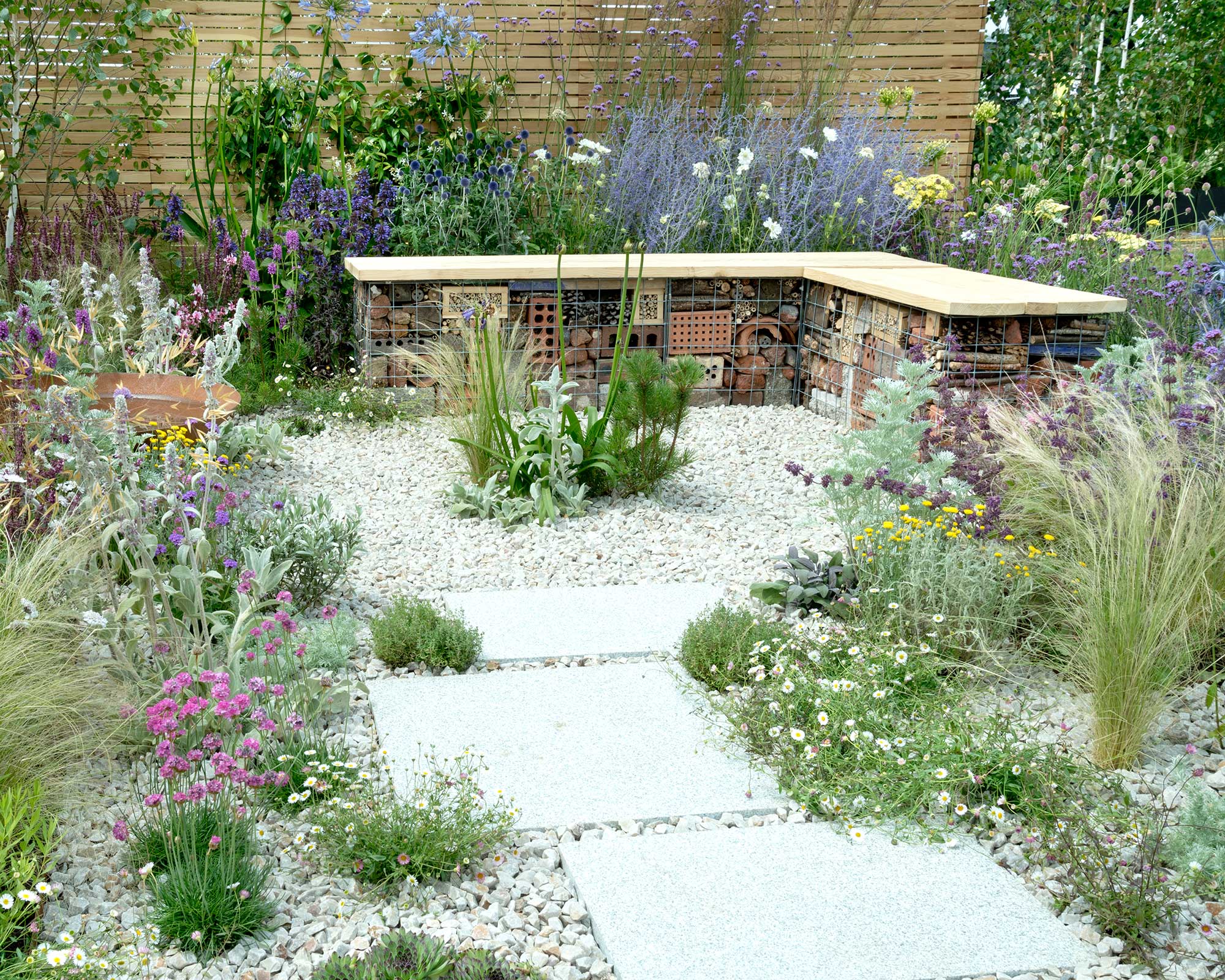
This statement bench not only makes a fabulous seating solution and focal point for a small graveled courtyard, but it also doubles up as a DIY bug hotel. It's perfect if you're on the lookout for wildlife garden ideas, plus, it's cheap to build, too.
All you need is some inexpensive gabion baskets, two planks of timber, and rubble and large rocks to put inside. This example includes bricks, logs, and other leftover material from builders.
2. Install raised garden beds
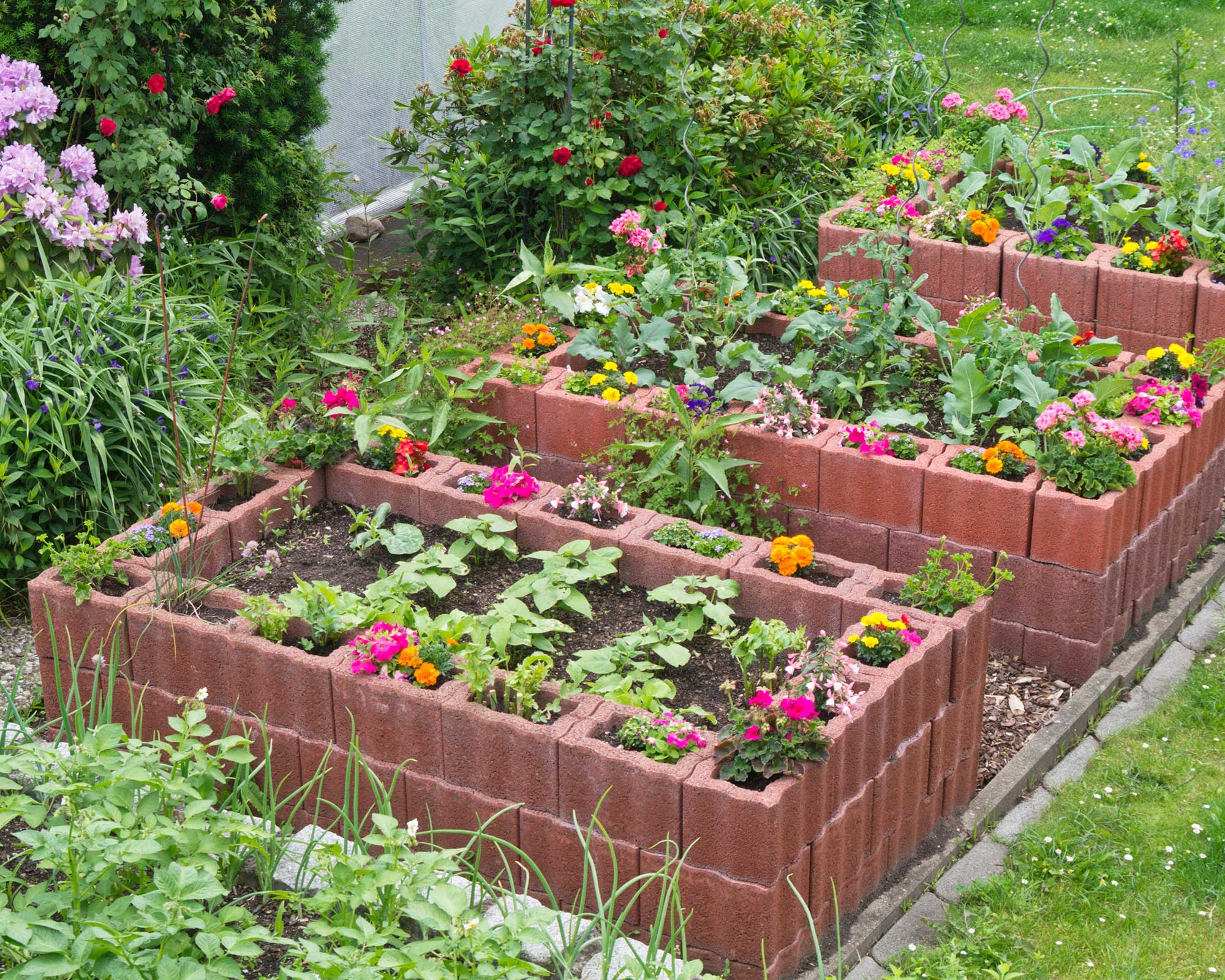
Learning how to build a raised garden bed will transform your growing endeavors. Plus, they add instant structure to a space.
'You can make your veg beds out of materials to suit your budget, building skills, and the size and space you have,' says John Negus, a gardening expert from Amateur Gardening magazine. 'The longest lasting and most permanent will be made of brick or block work but pressure-treated timber is also a very good option and will last for years.
'If you are planning a low bed on existing soil or grass, some ground preparation will be necessary to ensure good drainage,' he adds. 'Remove the turf and fork through the soil to break up any compaction.
'I wouldn’t put a low bed on hard standing as you need a depth of at least 2ft (60cm) to get satisfactory growing conditions,' he continues. 'If you have no choice but to build the bed on hard standing, you will need to ensure that excess water can drain by incorporating holes at the base. Alternatively, include a layer of drainage material at the base and then line the base and sides with a permeable membrane.'
3. Create a pretty pathway
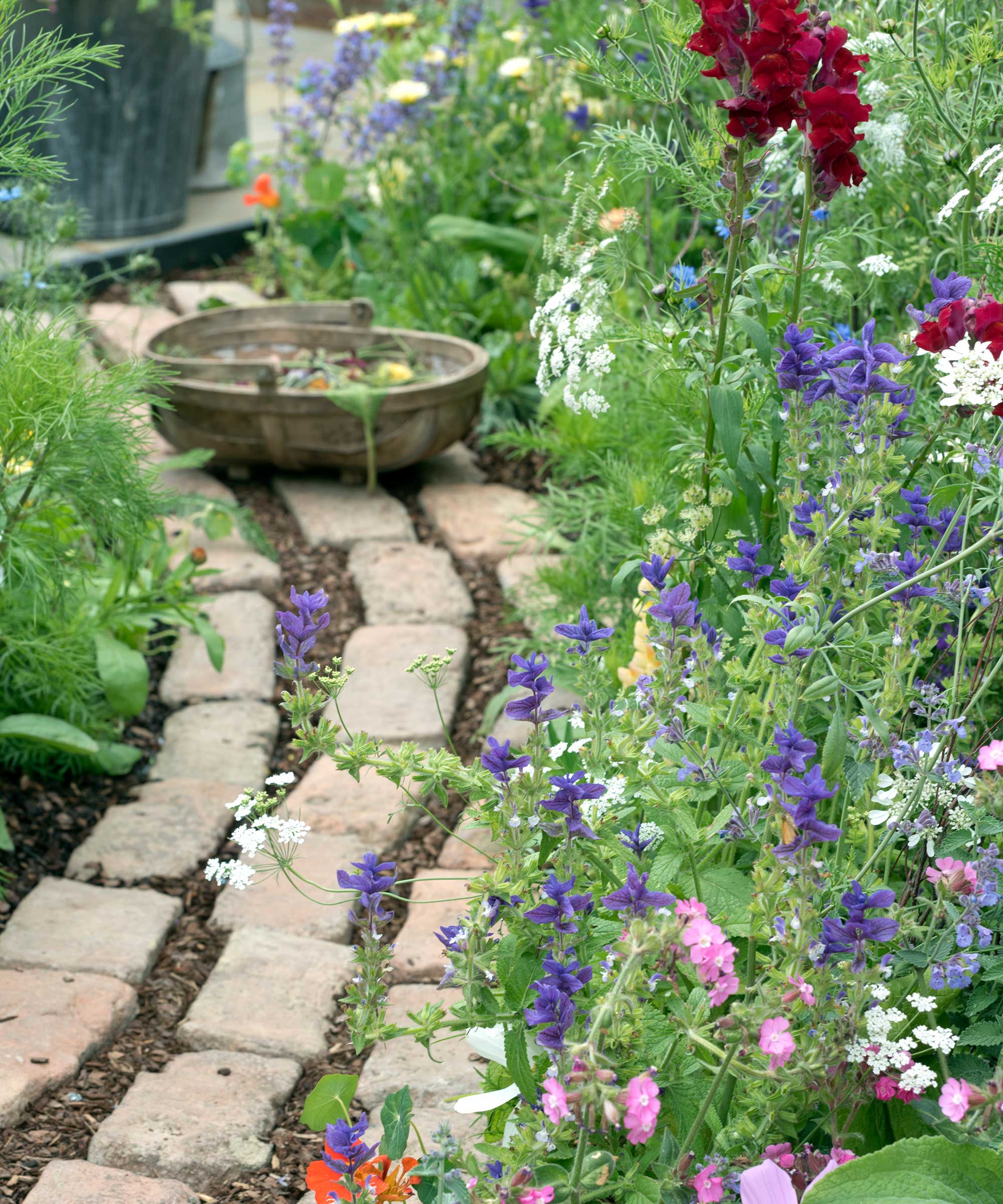
There are plenty of options if you want to build your own garden path.
This has to be one of our favorite approaches for a laid-back, cottage-garden-style plot. Made with reclaimed clay bricks interspersed with bark chippings, it's perfect for weaving through flower or vegetable beds to make access for maintenance and harvesting easier. Plus, it's budget-friendly and easy to install.
A gravel path is a good alternative that also ticks these boxes. 'If you’d like a natural aesthetic, try making a path from limestone gravel – it's inexpensive and adds a rustic feel to your garden,' says Carlos Real, Lawn Care Expert and Managing Director of TotalLawn. 'We'd recommend going for 20-30mm [0.8-1.2in] size stones as they generally last longer than the smaller ones and feel sturdy underfoot.'
4. Help wildlife with a stylish DIY bird feeder
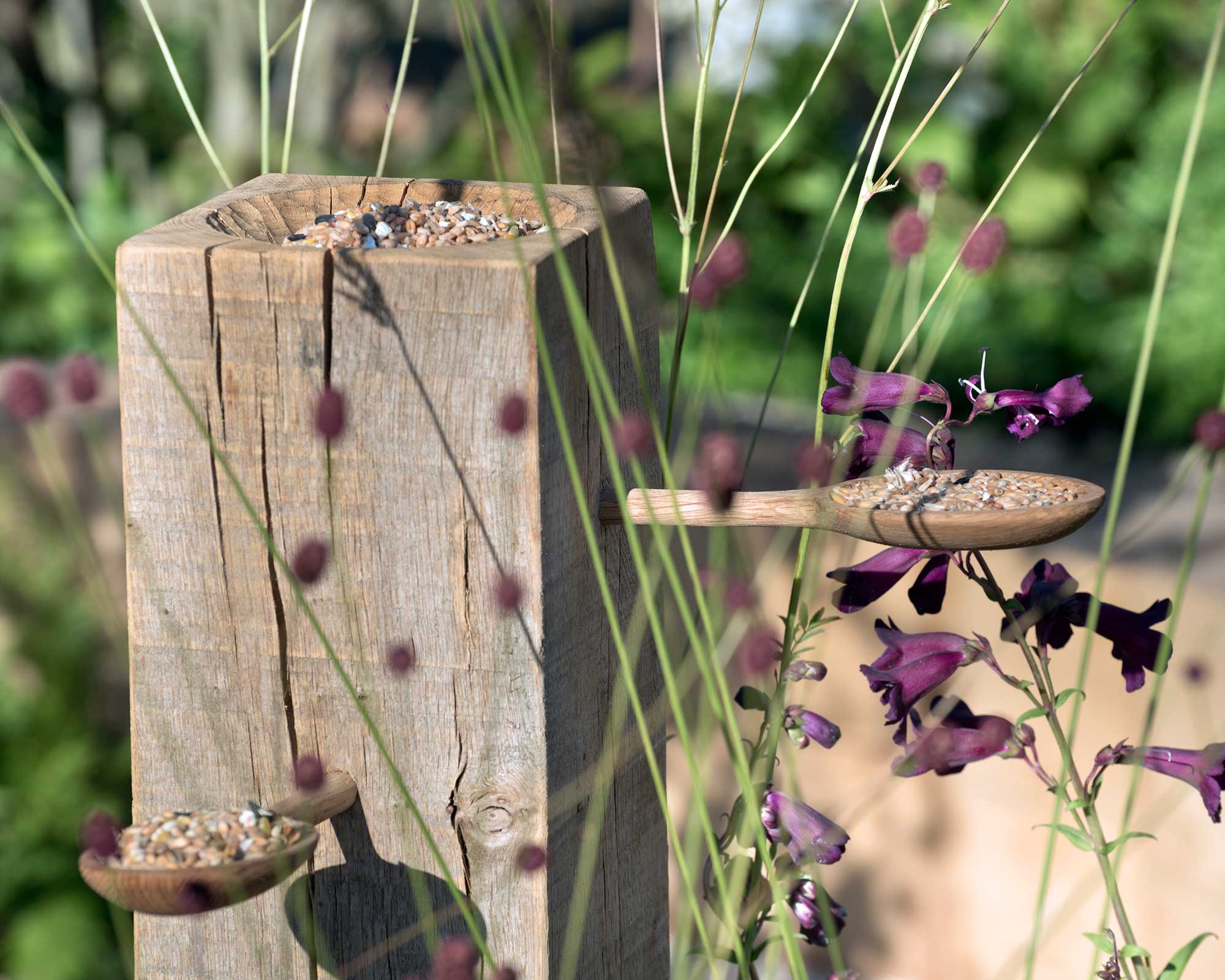
A DIY landscaping idea that's good for attracting birds into your garden is this simple yet effective feeding station.
Made by chiseling a shallow trough into the top of a wooden post and adding two wooden spoons, it's a straightforward design. But, it will encourage plenty more feathered friends to your outdoor space – a delight for any gardener.
5. Add personality by painting the paving

If your paving slabs are looking lackluster but you don't want to splash out on having a new patio installed, then how about updating what you already have with a lick of exterior masonry paint?
A painted patio is a surefire way to add personality and impact to your alfresco living space. From block colors to playful patterns and stencils, you can really get creative – we love this geometric, monochrome design for a contemporary corner.
6. Introduce a relaxing water feature to your plot
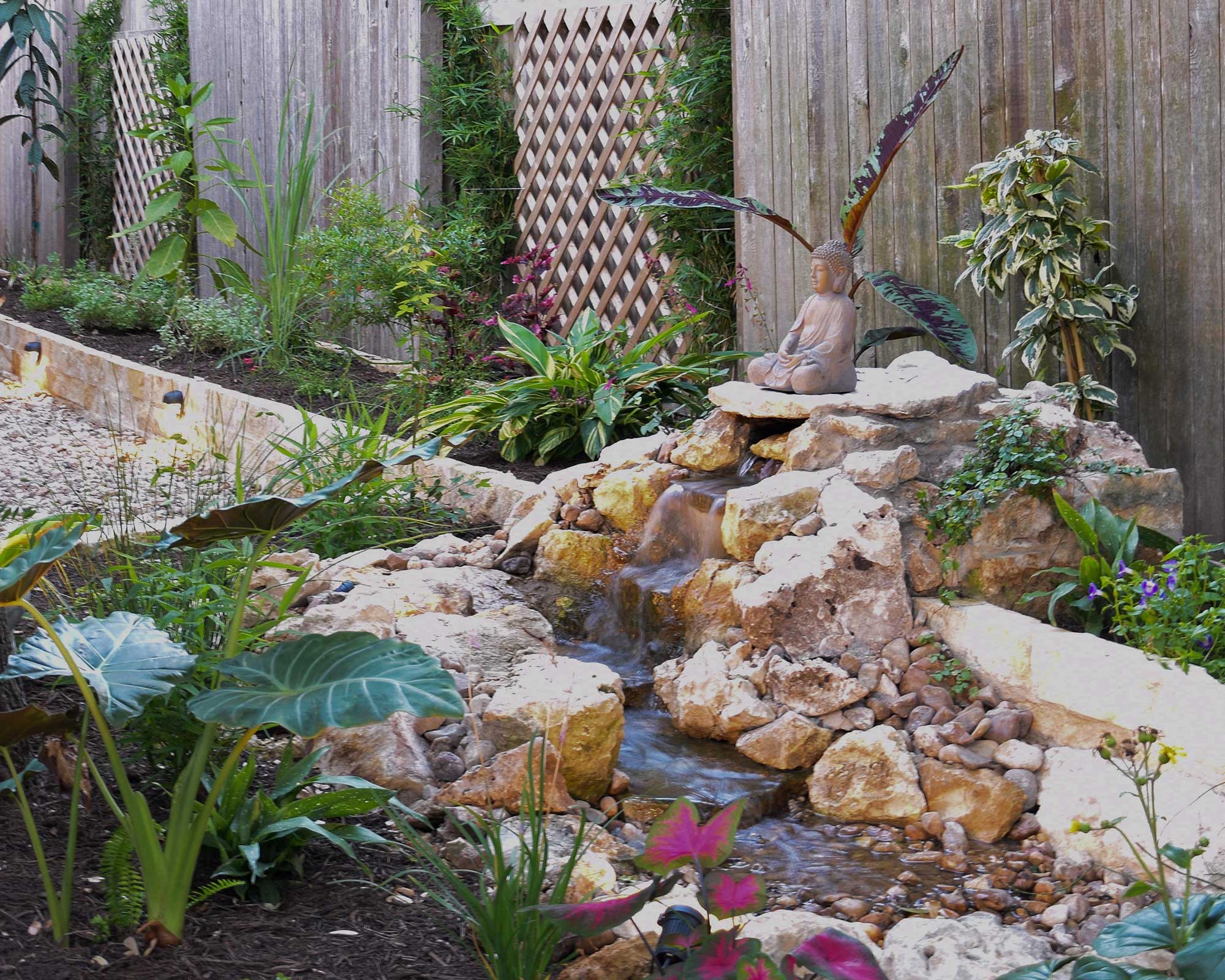
The trickling sound and sight of water will give any outdoor space a sensory boost. And there are plenty of ways to make a homemade water feature that aren't too difficult.
The simplest approach is to fill a large bowl or container with water, then add a small solar-powered pump and perhaps some pretty pond plants. Or, go one step further and create a miniature waterfall and stream built up with rocks and pebbles – as seen here. It's a lovely focal point for placing near a seating area.
7. Add a statement edge
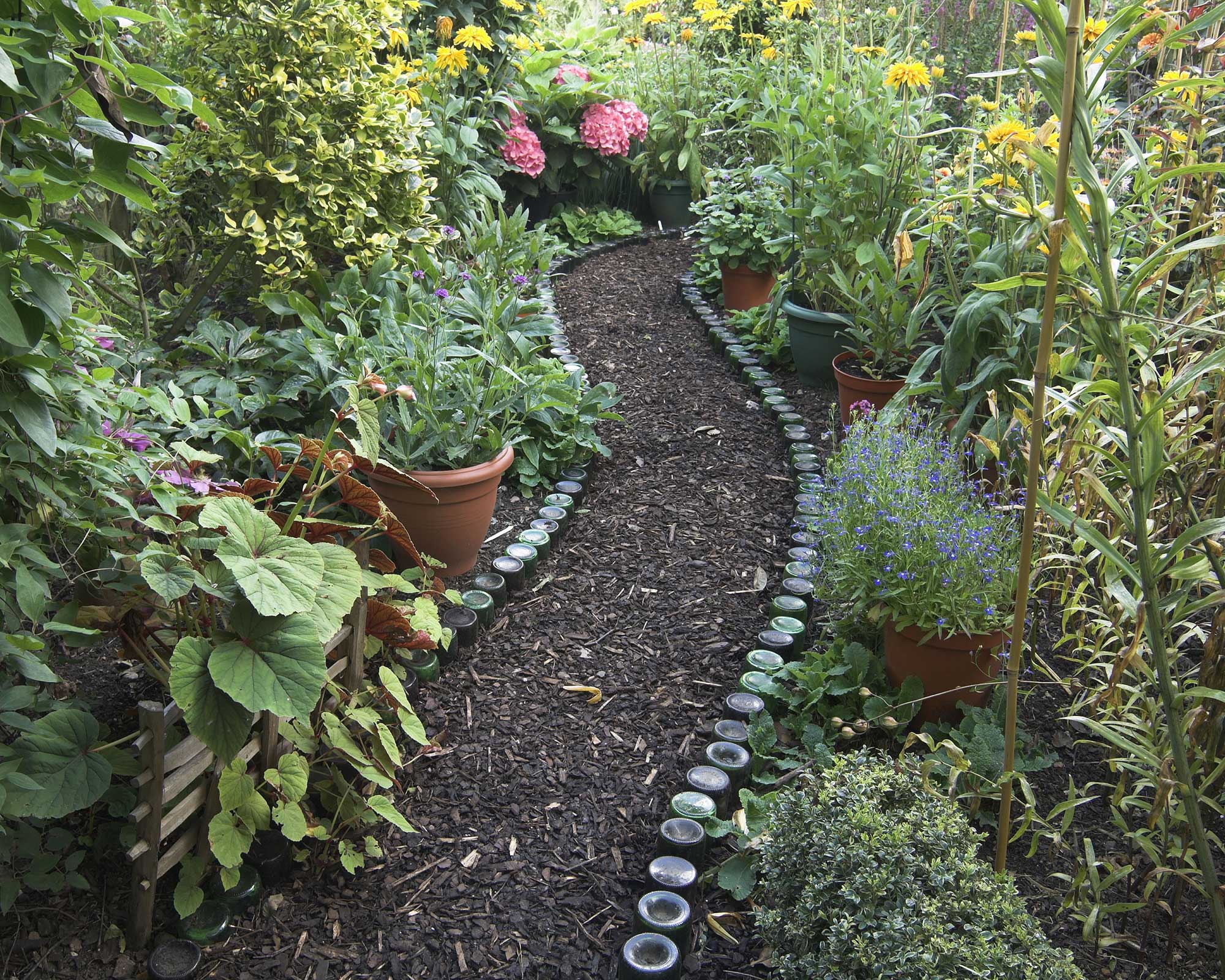
Garden edging is one of those landscaping features that can be overlooked, but it certainly shouldn't be. It gives instant order and structure to spaces, whether that's flower beds, lawns, or in this case, a pathway. Plus, it makes maintenance easier, too, particularly if laid around loose material such as gravel or bark chippings.
There are all sorts of cheap garden edging ideas that can be installed without the need for a pro. This glass bottle design is one of our favorites for a boho-chic look.
8. Plant beautiful blooms in new borders
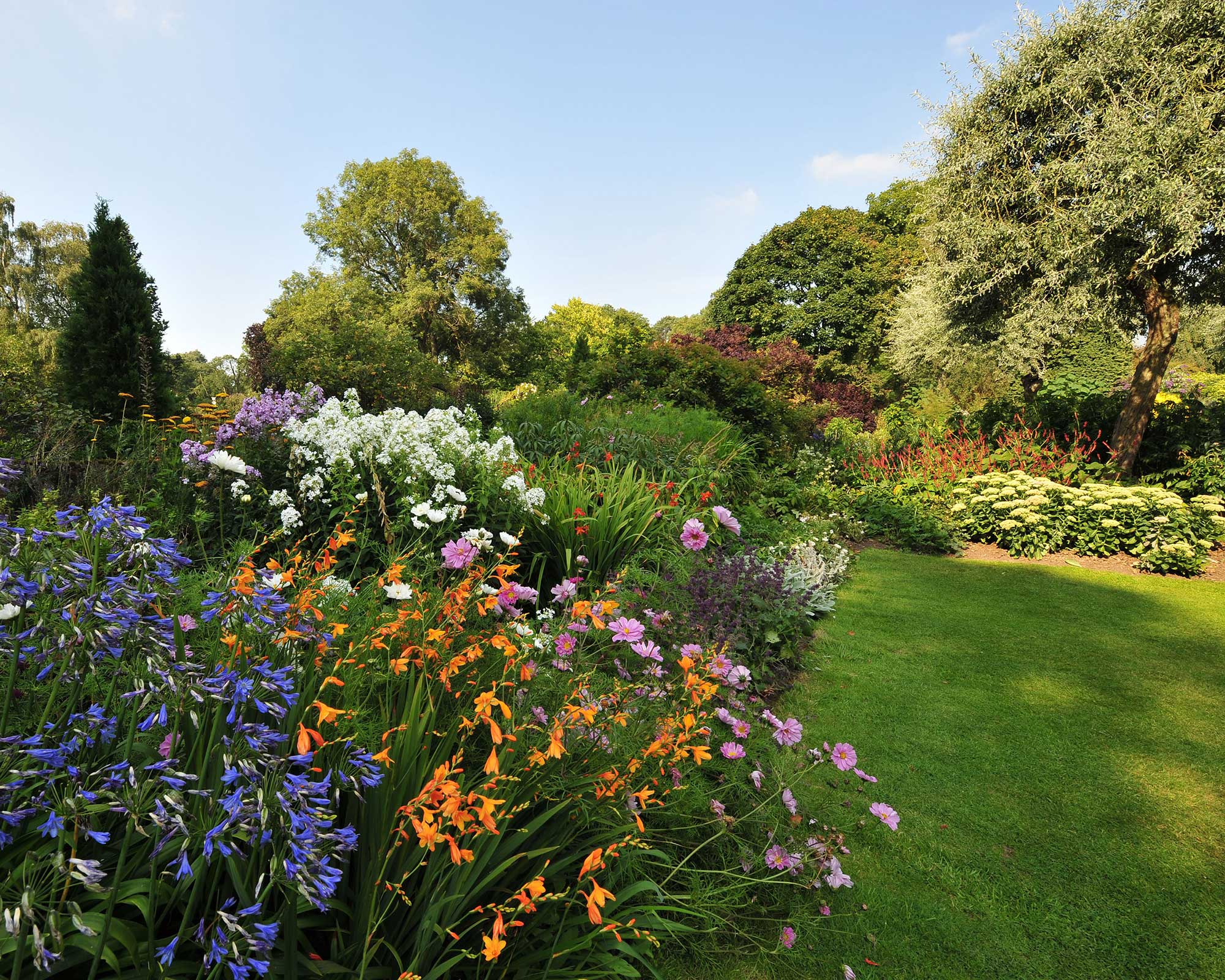
Landscaping isn't just about paving, pathways, and other hard features. Soft landscaping, such as flower beds and lawns, is just as important for building a beautiful garden.
Creating new flower beds can be as simple as grabbing a spade and spending a few hours digging, weed-removing, and adding compost. Then, you can fill them with your favorite blooms – our guide on how to get free plants will help you keep costs down. Go for drought-tolerant, easy-care varieties for a low maintenance garden border.
As for creating a new lawn, it's easier than you might expect. Laying turf requires a bit of hard work but you'll be rewarded with results straightaway, while planting grass seed is cheaper and doesn't take too long to grow, providing you do it at the right time.
9. Recycle old pallets to make chic storage
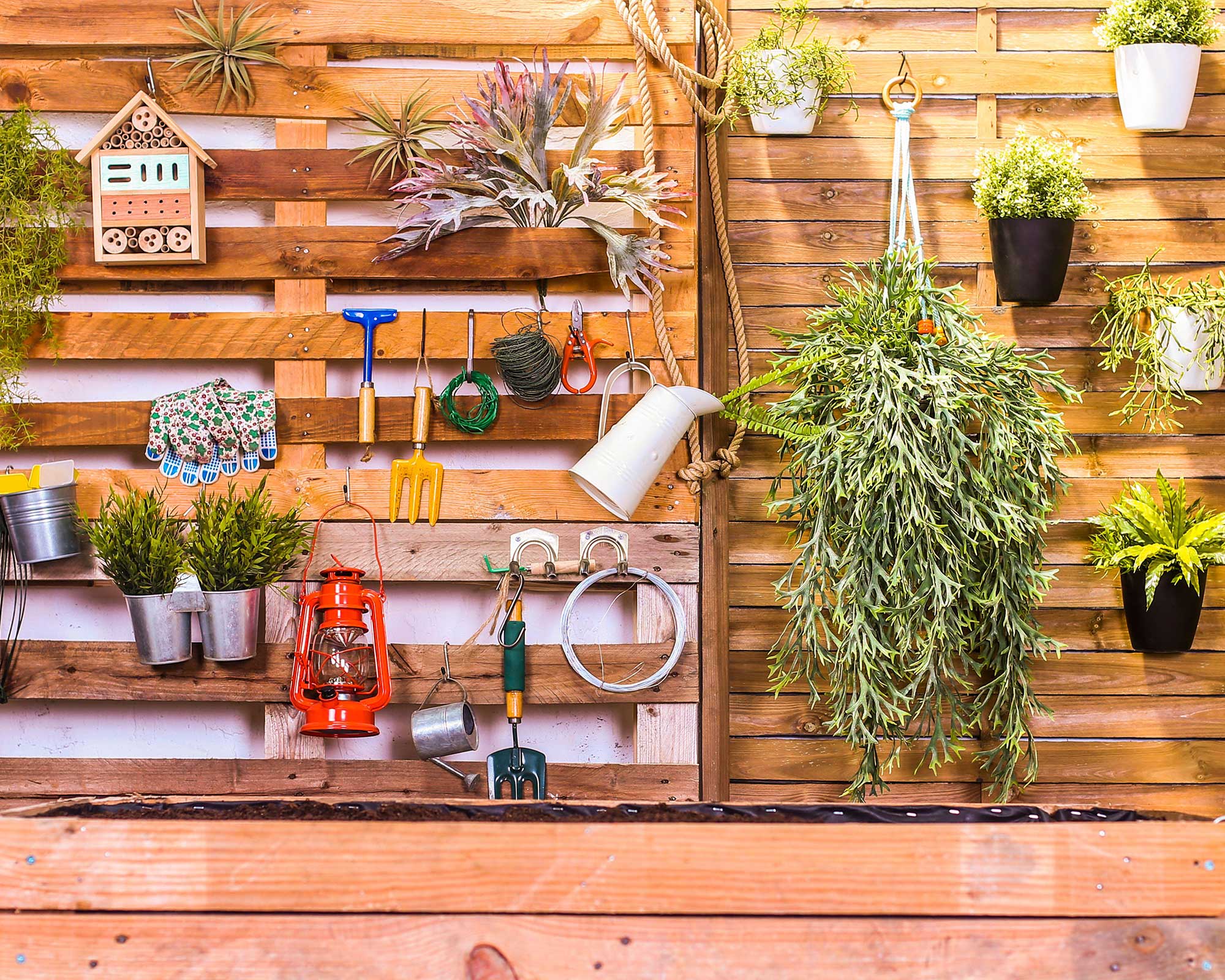
Every space – interior or exterior – needs some good storage solutions. And we love this pallet idea for a garden as a place for hanging tools, plants, and even a bug hotel above a potting bench.
It doesn't require much work at all to recreate a feature like this, just ensure you've got a sturdy wall or fence to attach it to securely. You could always give it a sand and a lick of paint for extra style points.
There are other DIY landscaping ideas that include pallets, too – such as living walls and garden dividers. They're a super versatile material, and can often be picked up for free.
10. Use garden sleepers as a versatile landscaping material
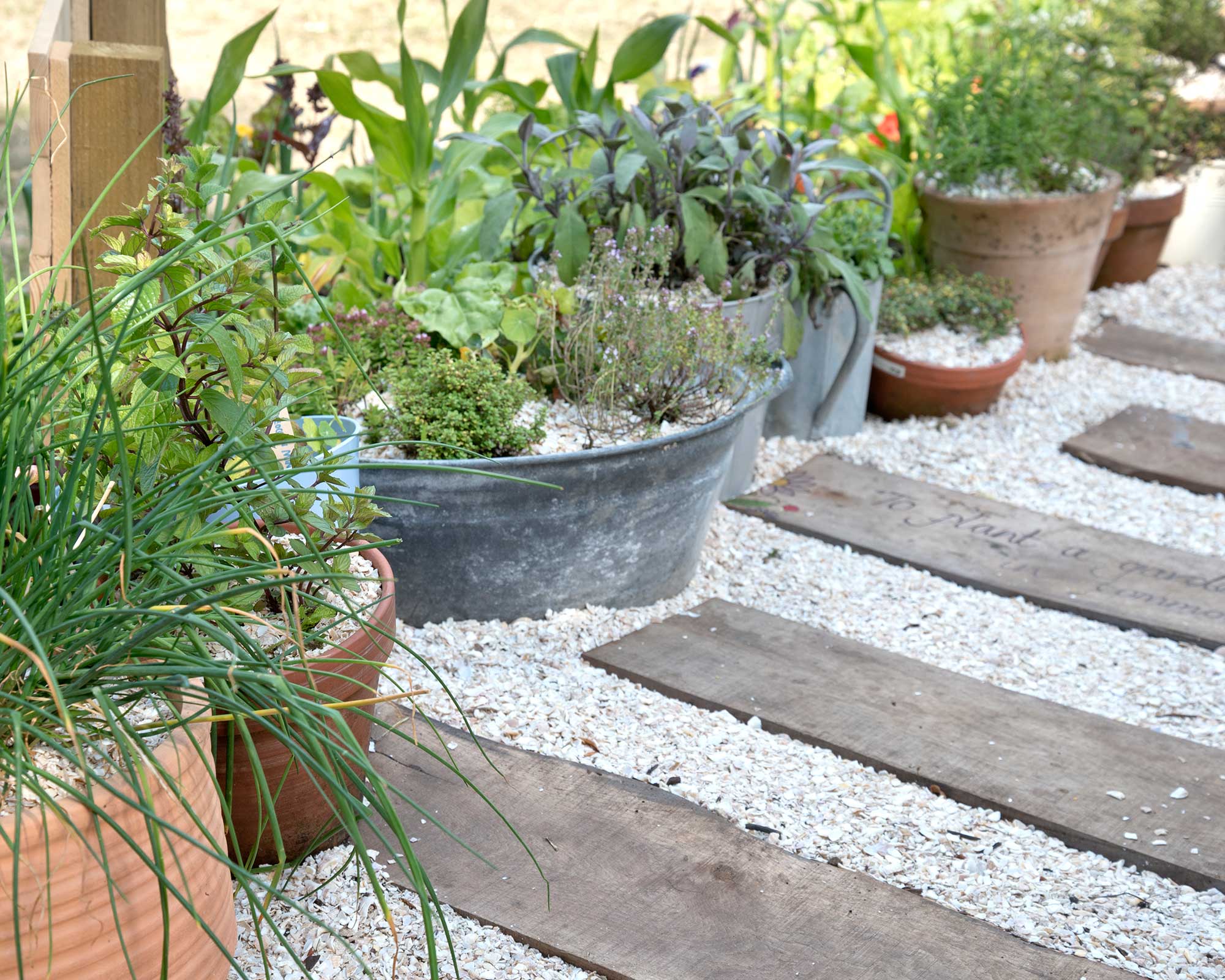
Speaking of versatility, garden sleepers are another great landscaping material that can be used for all sorts of outdoor projects.
Here, they form stylish stepping stones as part of a graveled walkway – a simple project to DIY. Lined with container plants, the overall look has an elegant, beachy vibe.
If you're a bit more experienced with the toolkit, sleepers can also be used to build garden edging, raised garden beds, or even a bench – there are plenty of options that will upgrade your plot.

The garden was always a big part of Holly's life growing up, as was the surrounding New Forest where she lived. Her appreciation for the great outdoors has only grown since then. She's been an allotment keeper, a professional gardener, and a botanical illustrator – plants are her passion.
